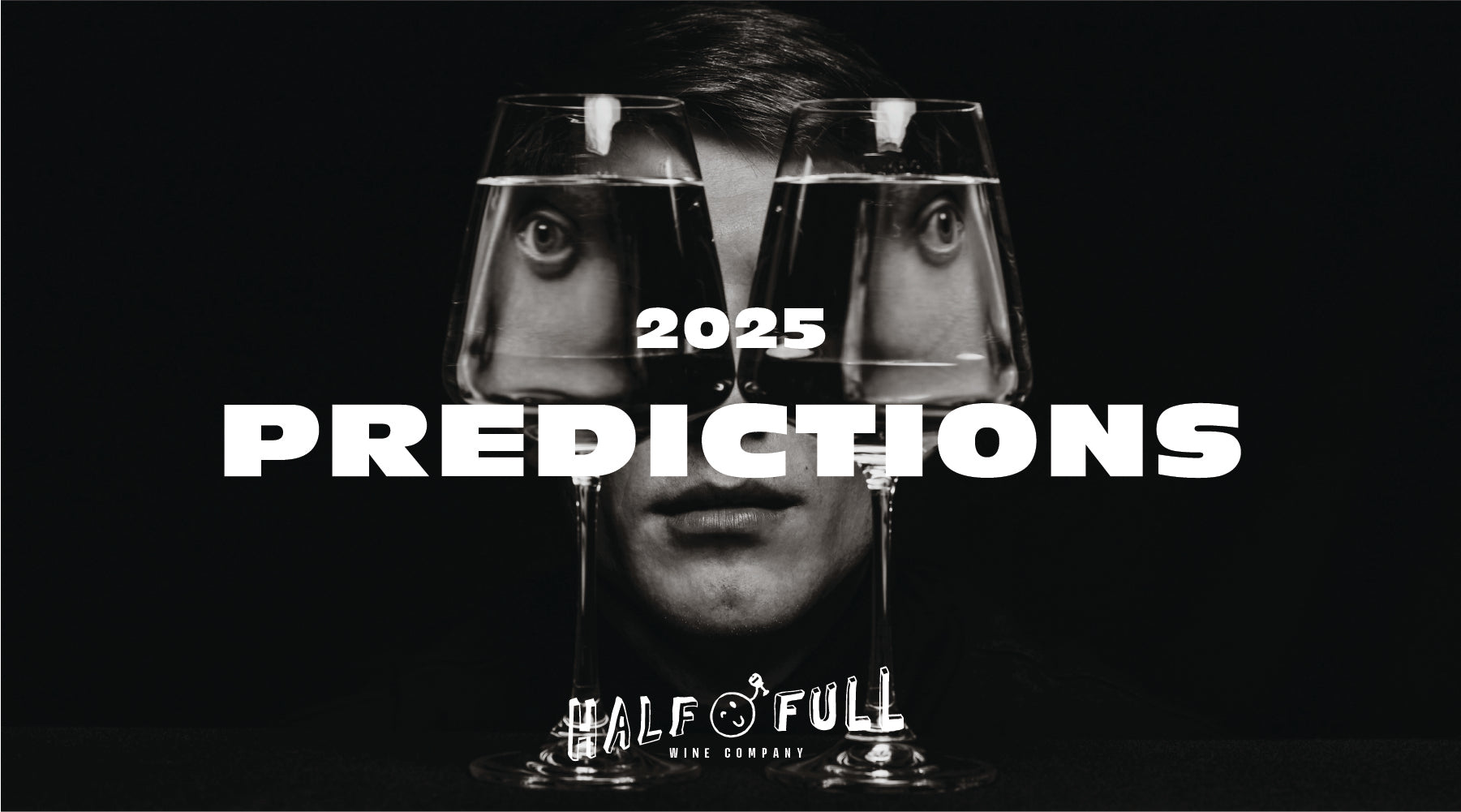
Bold & Uncorked: Our Unapologetic Predictions for Wine in 2025
The wine industry is at a turning point, and 2025 promises big changes for how we drink, buy, and experience wine. From the rise of unique varietals to wine cans gaining traction as the new go-to packaging, the future of wine is anything but boring. Here’s a no-holds-barred look at the trends reshaping the wine world—and why the rebels are winning.
Key Takeaways:- Authenticity is king: Big brands pretending to be small won’t cut it anymore.
- Varietal exploration: Expect to see wines like Albariño and Trousseau stealing the spotlight.
- Canned wine goes premium: Forget the stigma; cans are here to stay.
- Local wins big: Small-production wines are dominating, fueled by e-commerce and a desire for uniqueness.
1. Big Wine Brands Try to Look Small (But Don’t Be Fooled)
The big players in wine are trying desperately to stay relevant. Expect to see shelves lined with labels boasting “small-batch” and “farm-to-table” claims, but the truth? Most of these wines are bulk juice with a trendy new outfit.As The Drinks Business points out in their 2025 wine trends forecast, big brands will invest heavily in marketing to mimic artisanal producers, but savvy consumers won’t be fooled. “Authenticity is the currency of modern wine drinkers, and it’s something big brands just can’t fake.”
If it’s sitting on a grocery store shelf next to mass-produced snack foods, chances are it’s as far from “handcrafted” as you can get. Instead, look to small producers who are making wines that are truly unique, not just marketed that way.
2. Wine Lovers Want New Varietals
Say goodbye to the domination of Cabernet Sauvignon and Chardonnay—modern wine drinkers are exploring exciting alternatives. Grapes like Chenin Blanc, Albariño, and Trousseau are leading the charge as adventurous drinkers seek out wines that are as bold as their tastes.According to Elle Gourmet in their 2025 wine predictions, emerging wine regions and lesser-known varietals are becoming the new standard for wine enthusiasts. These wines offer the excitement of discovery, whether it’s a skin-contact Rosé from the Sierra Foothills, a vibrant Albariño from Clarksburg, or a funky Pet-Nat crafted out of one of Napa’s hidden corners.
The move toward lesser-known varietals also marks a shift away from the bulk wine giants. In 2025, more consumers will turn to wines with soul and story, choosing bottles crafted by small producers over the mass-market blends of big brands. The “Coca-Colas” of wine will cling to their safe bets, but drinkers will seek out the bold and the unexpected, reshaping what it means to enjoy a great glass of wine.
This year, adventurous varietals will define a new generation of wine lovers—curious, daring, and unapologetically ready for something different.
3. Bottles Aren’t the Only Way to Enjoy Wine
Wine in cans is no longer a gimmick. In 2025, expect to see premium-quality wines moving beyond traditional glass bottles and into aluminum. Why? Convenience, sustainability, and accessibility.
As noted by VinePair in their wine trends to watch, cans are a hit with eco-conscious consumers thanks to their recyclability and lighter carbon footprint. Plus, they’re perfect for on-the-go occasions where bottles simply don’t make sense—think outdoor concerts, picnics, or lazy Sundays on the beach.
But this isn’t just about convenience. High-end producers are finally getting in on the canned wine game, proving that good wine doesn’t have to be confined to glass. If you’re still clinging to corks and bottles, it’s time to rethink what premium wine can look like.
4. The Rise of Small, Local, and Unique Wines
The future of wine is about breaking free from tradition. Consumers in 2025 are seeking more than just great wine—they’re looking for authentic, memorable experiences. It’s not about the same old chateau or an overly polished tasting room anymore; it’s about uncovering the unexpected and connecting with something real.
Lesser-known regions like the Sierra Foothills or Paso Robles are becoming hotbeds of creativity, offering wines with character, story, and approachability. These areas aren’t weighed down by legacy or mass production—they’re where winemakers are rewriting the rules and crafting small-batch wines that stand unapologetically apart.
Thanks to the rise of e-commerce, wine lovers are no longer stuck choosing from whatever’s stocked at the local grocery store. With just a few clicks, they have access to boutique producers, low-intervention wines, and bottles from under-the-radar regions that might never make it to a traditional shelf. Double Forte predicts that e-commerce will play a major role in bringing these wines to a wider audience. The ability to explore and curate their own wine journey—without leaving home—means consumers are in complete control.
It’s not just about the wine—it’s the connection to the people, the places, and the stories behind the bottle. In a world filled with sameness, these wines stand out by daring to be different, inviting drinkers to experience wine in a whole new way.
What This Means for 2025
The wine industry is transforming, and the changes are long overdue. Big brands will keep up their charade, but the real excitement lies in small producers, emerging varietals, and innovative packaging. Canned wine, unique grapes, and hyper-local vineyards are the future, and they’re proving that wine doesn’t have to be boring or pretentious.
So here’s to the bold drinkers and daring winemakers who are shaping the future of wine. In 2025, rules are meant to be broken, and every sip should be an adventure.
